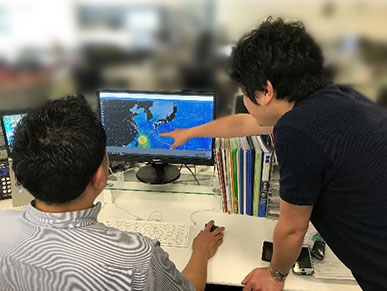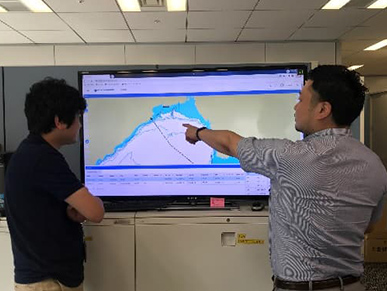In response to the collision that occurred in 2020 between a vessel under our management and one managed by other companies, as well as major maritime accidents reported from around the world, we increased the navigation support capabilities of our fleet, implementing an array of tools to assist captains and management departments on land in making confirmations and judgments for the safety of their vessel.
We are introducing effective advanced technologies to improve transport efficiency and environmental performance, with a view to meeting social needs while ensuring safe navigation.
Introducing Safe Maneuvering Support Tool “i-Master”
We have introduced i-Master to support safe maneuvering. This tool has functions equivalent to or higher than the electronic chart display and information system (ECDIS) provided by Japan Marine Science Inc., such as to display on the official electronic chart the automatic identification system (AIS) information of vessels in our fleet and others, forecast tracks, berthing speed, as well as automatically measuring the distance to the shore during berthing/unberthing operations. It is also equipped with various alarms for water depth and other parameters. This program is available on a handy tablet device.
This tool is equipped with a playback function, enabling us to review maneuvering results and share the data with officers in debriefing sessions.
*We use similar products supplied by other companies.
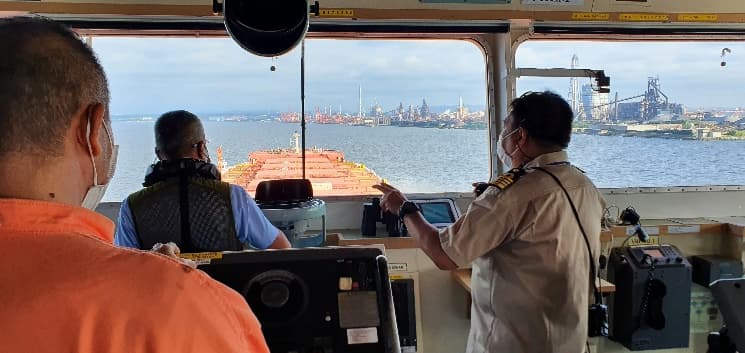
Entering port while mutually confirming the vessel motion with the pilot -
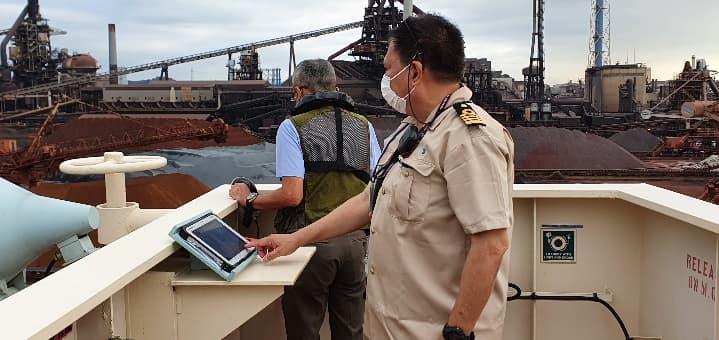
Confirming the actual situation using the monitor -
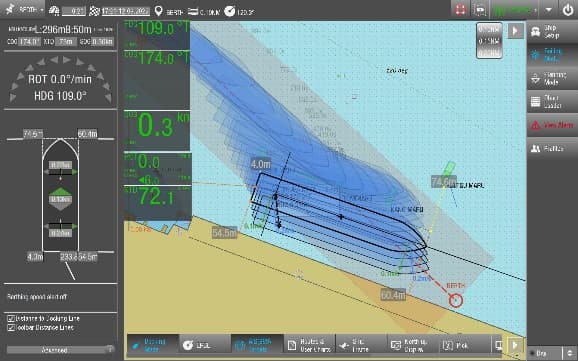
Having an overview of the vessel motion on display
Introducing Grounding Alert System “Off-Track Alert”
We have implemented the grounding alert system provided by Weathernews Inc. a function for onshore real-time monitoring to prevent vessel grounding.
In the case of the vessel deviating from the route planned by the captain, or entering water areas with risks of grounding, this system is able to alert the vessel and management departments on land at the same time, enabling onshore management departments to check the situation and safety status of the vessel immediately.



